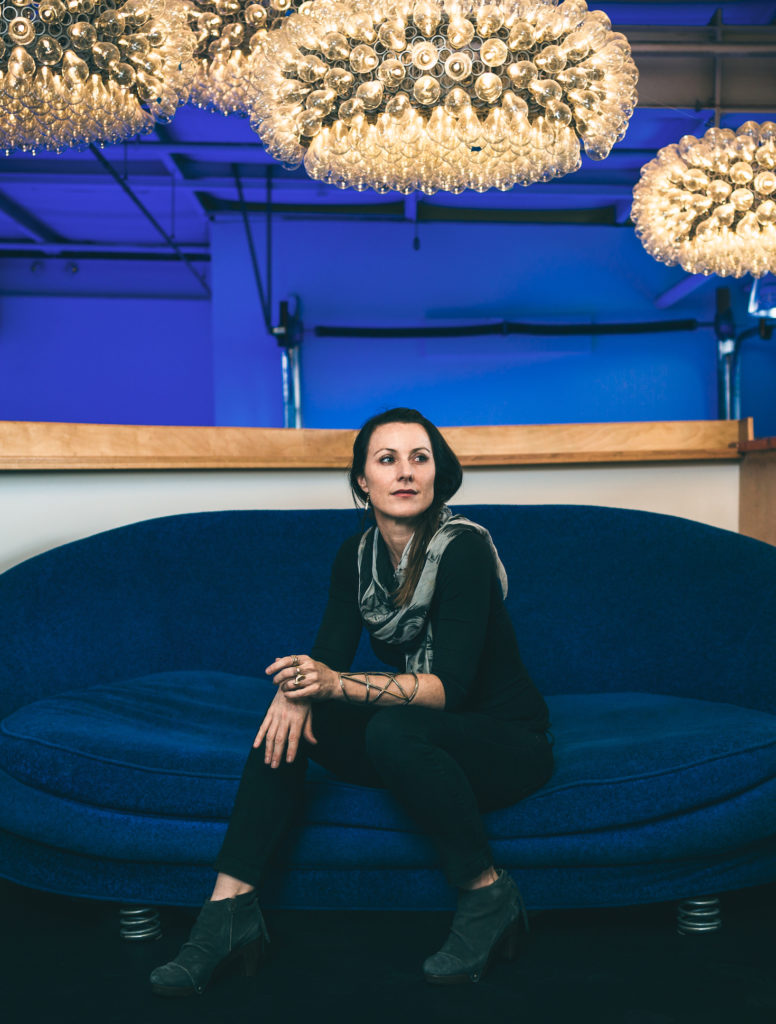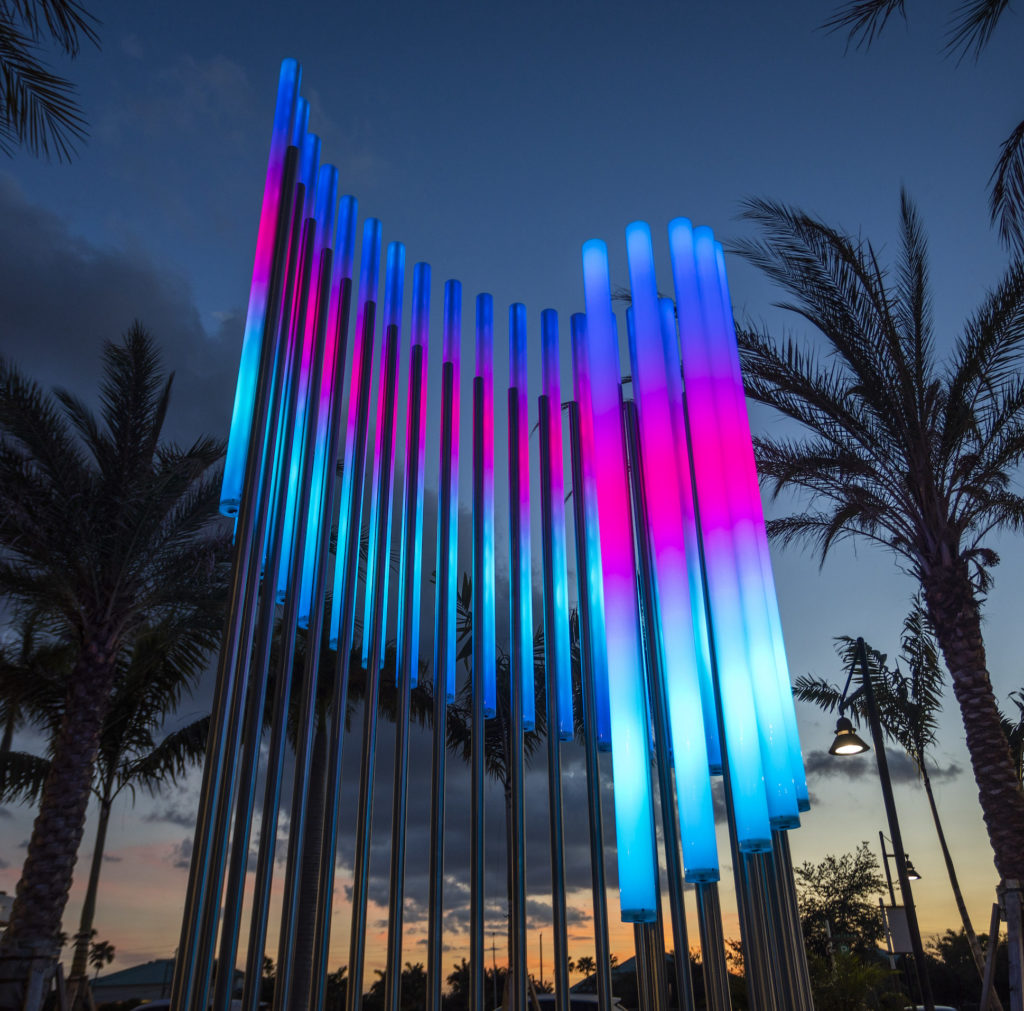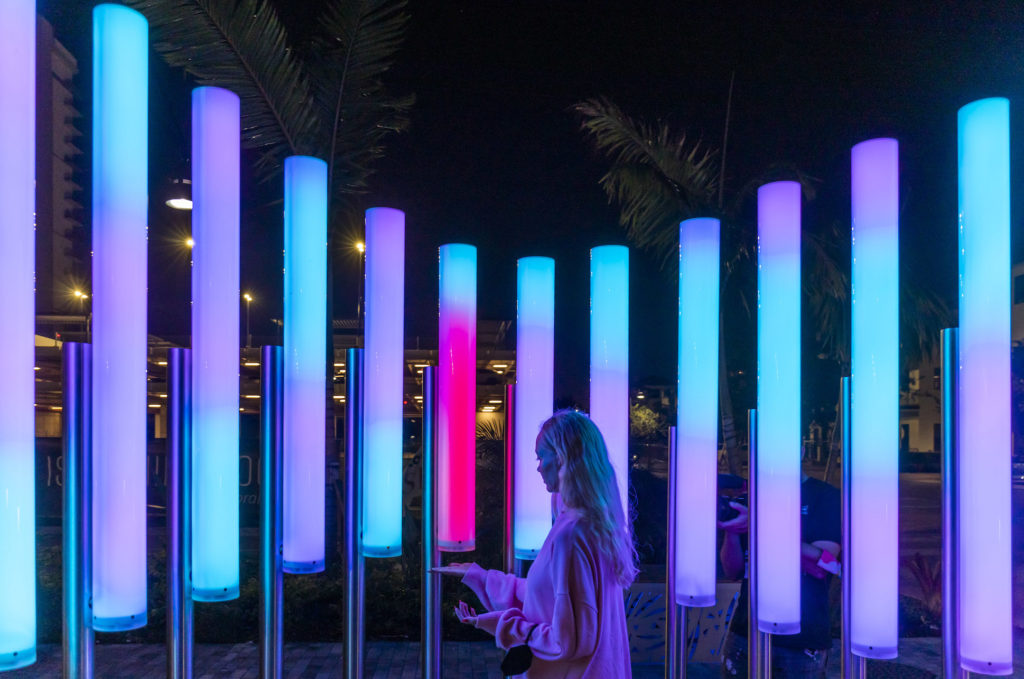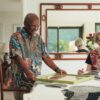Text by Natalie Schack
Images courtesy of Jen Lewin Studio
At 3,000 feet above the ocean on the volcanic slopes of Haleakalā, the clouds are at eye level and the ocean stretches out in a vast blue sheet of apparent tranquility. When the sun sinks below the cloud line, it sends its rays through the cumulus and stratus and cumulonimbus in glowing golden threads of brilliance, a stunning light show that’s both earthly and unearthly.
“It was glorious,” says artist Jen Lewin of the spectacle visible from her childhood home in the pastoral upcountry of Kula, Maui. “And it happened every day.”
Returning as an adult to this quiet, powerful scene and witnessing the same explosions of light that captivated her in childhood, Lewin had a revelation. “Of course I make light art,” she laughs. “I spent my childhood looking at these beautiful, glowing, colorful displays.”
“Light art” is a loose term for what Lewin creates. Her technical sculptures combine engineering, digital technology, and illumination, often in the form of public installations that encourage viewer participation and community engagement. The large-scale works combine Lewin’s passion for performance art as well as disciplines like construction and computer programming, a dichotomy she’s been navigating her whole life.

Growing up with a physician father and a choreographer mother, Lewin was equally likely to be found dancing or fiddling with her father’s tools. She fell in love with theater from an early age, drawn to both performance and the technical aspects of backstage.
As a university student, she sought a true liberal arts education, one that combined both art and science, and landed in the architecture department at the University of Colorado Boulder. During the technology boom of the ’90s, she moved to Silicon Valley, where she found work as a creative director at a tech company. It was an amazing job, Lewin says, but it didn’t nurture her skills and interests equally. “I realized I had kind of only achieved half of what I had set out to do,” she says.
Lewin is now based in New York City, where she creates highly technical public sculptures that have taken her all over the world. Recently, though, she’s come full circle, beckoned back to the islands where her fascination with light and nature began.

First, she brought her traveling, interactive artwork Aqueous to Kapolei Commons in West O‘ahu as a temporary installation in the winter of 2018. Conceived as a site-specific work for Burning Man 2017, the sculpture’s reflective, serpentine pathways mirror the sky during the day and light up at night, changing color as participants navigate its glowing contours after dark.
Then, ‘Iolani School commissioned Lewin’s first permanent installation in Hawai‘i: “Flow,” a graceful, playful sculpture installed on the wall of the school’s Kosasa Performance Studios building in 2020.
The sculpture looks like a wave made from the pipes of some futuristic organ, frozen in mid-undulation until it comes alive with the intervention of passersby. Place your hand beneath one of the sculpture’s 24 polycarbonate tubes and a sensor triggers a musical note and fills the tube with colored light. Hold your hand beneath another and you get a different color and tone. Move your hand back and forth beneath multiple pipes to activate a brilliant and ethereal orchestra of light and sound.

The more participants engage, the more tones and lights are triggered, and the more complex the show becomes. “It’s purposeful—how you move through it, how it responds to you,” Lewin says. “It’s not telling you what to do, it’s allowing you to have a relationship with it.”
The installation is the first time Lewin has employed both sound and light at quite this level of interplay and interaction. Other elements of the work—collaboration, community, engagement, and, always, light—are themes she’s been exploring throughout her life and career, beginning with her days basking in the dazzling sunbeams above Haleakalā, Hawaiian for “house of the sun.”
“A lot of what I make comes from this desire to recreate what I see in nature, the way light is on a pool of water, how it streams through a cloud,” Lewin says. “That magical experience of awe.”





